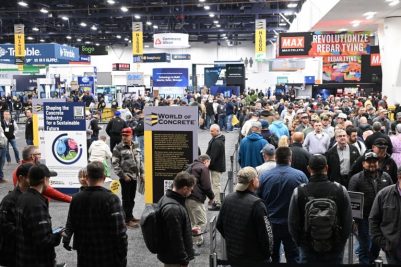The Mine Safety and Health Administration has released its investigation report for the July 23 fatal accident at the Cemex Brooksville South Cement Plant in Florida.
On the day of the accident, 51-year-old Ismael Santana, contracted to haul material for Tri-State Carrier, reported to the mine guard shack at approximately 8:45 a.m. He was delivering his first truck load of fly ash for the day. Santana had picked up loads of fly ash from the Port of Tampa and delivered them to the mine for the past 13 years.
After Santana checked in, he drove the haul truck to the materials storage building. Prior to the accident, Gary Moore was operating a front-end loader on the north side of the materials storage building where he was loading fly ash into a dump hopper located at the top of an inclined ramp.
Santana parked his truck and exited with the crank handle to roll back the tarp in his hand. At approximately the same time, Moore dumped a bucket of fly ash into the hopper and backed the front-end loader down the ramp. He then turned the rear of the front-end loader to the east and struck Santana, pinning him between the rear of the front-end loader and the fuel tank of the haul truck. Moore realized he hit the truck and pulled forward slightly. He exited the front-end loader and saw Santana lying on the ground next to the haul truck. Santana was responsive and complaining of chest pain and troubled breathing.
At approximately 8:50 a.m., Moore used the radio to call David Miner in the plant control room to report the accident and to contact 911. Emergency Medical Services arrived at the plant at 8:55 a.m. and transported Santana to Bayfront Health Brooksville Hospital, where he was pronounced dead at 10:06 a.m. The cause of death was attributed to multiple blunt force injuries.
MSHA investigators conducted a root cause analysis and identified two causes: 1) Management failed to ensure the operator of the front-end loader maintained control of the loader at all times while the loader was in operation, specifically while haul trucks were unloading raw materials at the materials storage building. No safe operating procedures had been established to ensure communications between the incoming truck drivers and the front-end loader operators. 2) Management did not ensure that site-specific hazard awareness training was provided for contract truck drivers, including the victim, delivering raw materials to the plant.
To correct this, management established safe operating procedures for mobile equipment operators and incoming haul truck drivers bringing raw materials to the materials storage building. The procedures include the use of hand held radios for communication between the front-end loader operator and the haul truck drivers. Cameras and sensors will be installed on the front-end loaders. All mobile equipment operators and haul truck drivers were instructed in these safe operating procedures.



